An Instagrammable Korean Temple in Silang, Cavite
After revisiting the church of Silang (Check: Our Lady of Candelaria Parish), we went to another famous yet hidden landmark in the province. Located in Brgy. Pooc 2, Silang, Cavite is a Korean temple. Formally known as the Manila Buddhist Meditation Center, this temple was built in 2008 and is said to be the first Korean temple in the Philippines. Not to be confused with Saint Andrew Kim Taegon Shrine in Lolomboy, Bocaue, Bulacan which was established in 2001 in honor of the very first Korean saint. This modern temple in Silang, Cavite is probably the first “Buddhist” temple founded in the country (Buddhism is one of the most dominant religion in Korea).
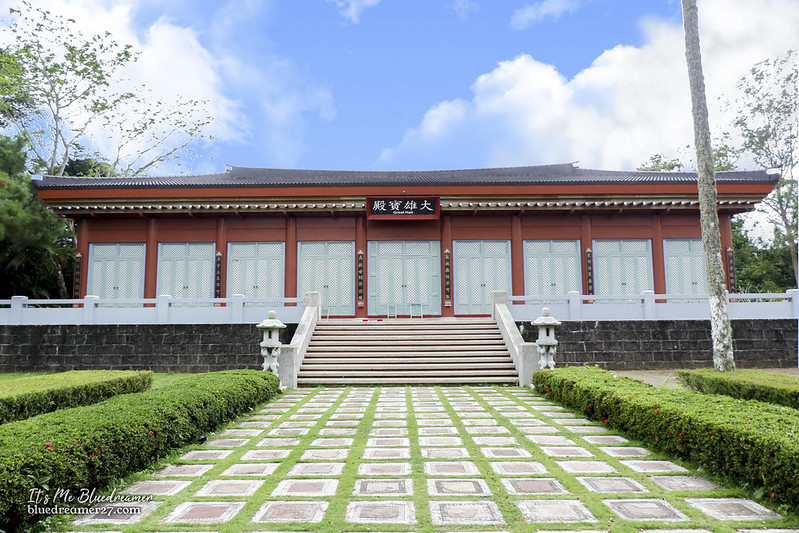
The Korean Temple in Silang, Cavite
If you are planning to visit this highly Instagrammable place in Silang via public transportation, be mindful that it is not easily accessible and going here could be a little pricey. From Silang Church, you can ride a tricycle that can drop you directly to the Temple. The rate was Php150 per head and since there were just few public vehicles going to that area, we suggest that you ask the driver to wait for you or pick you up on a certain time. It was just a small place after all and you can explore the area in less than an hour. It is more ideal if you have your own car or motorcycle.
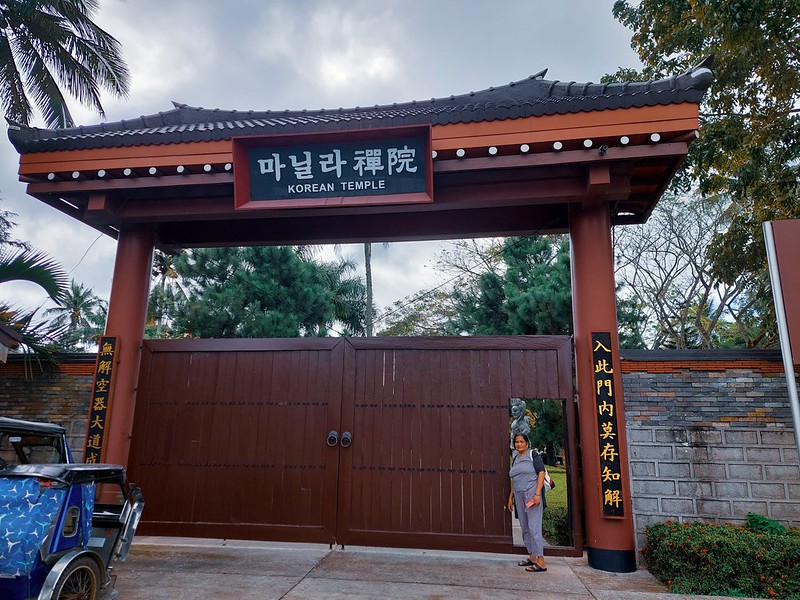
The main entrance to the Korean Temple
Manila Buddhist Meditation Center is actually a private property but they are allowing walk-in visitors to drop by. There is also a minimal entrance fee of Php30. We were warmly welcomed by the caretaker of the Temple and was even kind enough to open the actual temple so we can see the altar inside. The place features a wonderful landscape and offers a tranquil atmosphere.
Take note that this is a sacred place so please observe silence. It is also important to mention that visitors are required to wear proper dress code and they are also not allowed to enter the actual temple.

The main highlight of this place is the Korean temple itself which makes you feel that you’re visiting an actual temple in Korea. If you are a big fan of Korean dramas, then this is a perfect place for you.
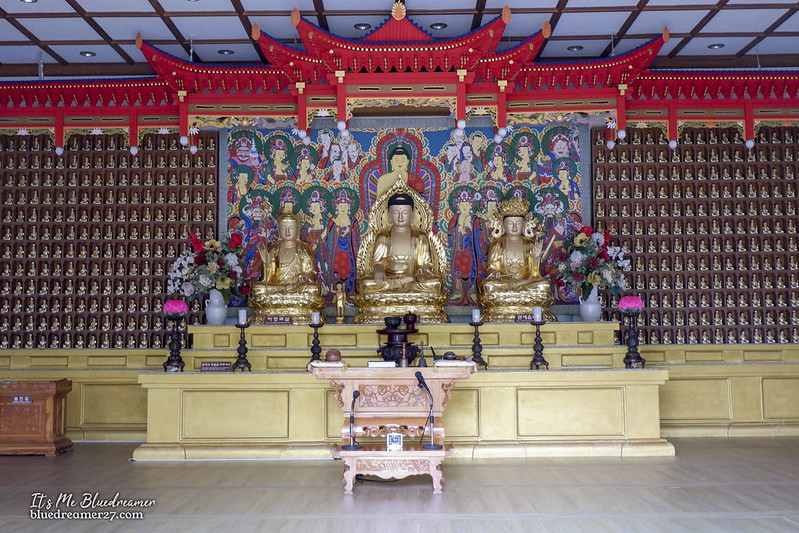
The altar featuring deities or Buddha Gods; Ksitigarbha Bodhisatva, Shakyamuni, and Avalokitesvara Bodhisatva. The wall behind the altar also features thousands of small niches with small Buddha statues.

While it is not allowed to take photos inside the temple, you can snap photos outside, especially their absolutely Instagram-worthy stairs and corridors.
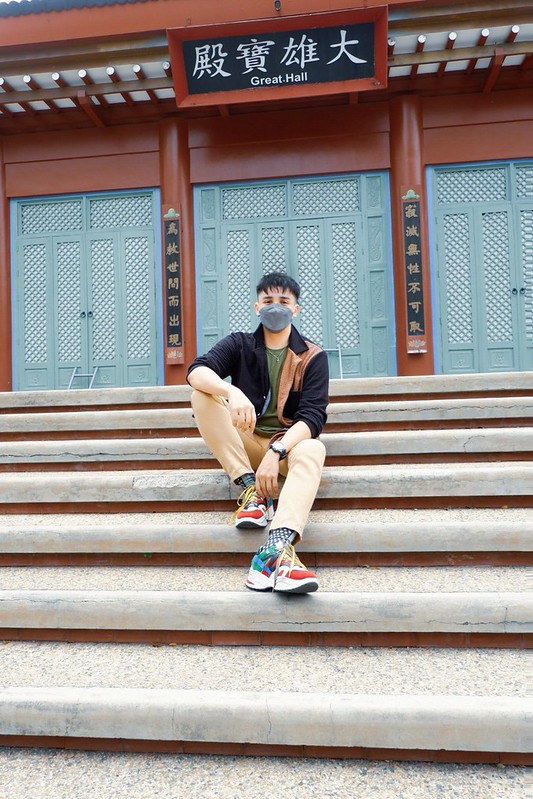
If you are lucky enough, they also lend some Korean traditional outfit for free

Outside, you’ll find more Statues depicting various Deities. The image above features the so-called Four Heavenly Kings

Virūlhaka
Virūlhaka, King of the south and one who causes good growth of roots. His symbolic weapon is the sword which he carries in his right hand to protect the Dharma and the southern continent.

Vessavana
Vessavana, the King of the North and the chief of the Four Kings. His symbolic weapons are the umbrella or pagoda.

Dhatarattha.
Dhatarattha, king of the East and god of music. His symbolic weapon is the pipa (stringed instrument).

Virūpakkha
The last statue is Virūpakkha, the King of the West and one who sees all. His symbolic weapon is a snake or red cord that is representative of a dragon.

Adorable young Buddhas having tea. It is interesting to mention that Tea has a close connection to Buddhism. Tea expresses China’s history. It symbolizes the ethos and practices of yoga, Zen and meditation. Buddhism’s concerns for healthy daily living conjure up images evocative of tea. They highlight its calming, cleansing, contemplative, and ceremonial nature. There is actually a rich history behind the connection of Tea and Buddhism which you can read here.
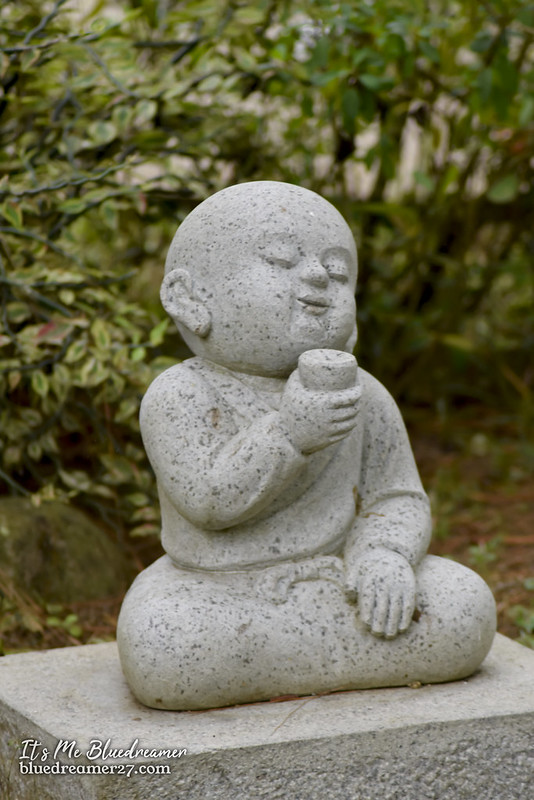
Enjoying his cup of tea

A very serene and tranquil atmosphere
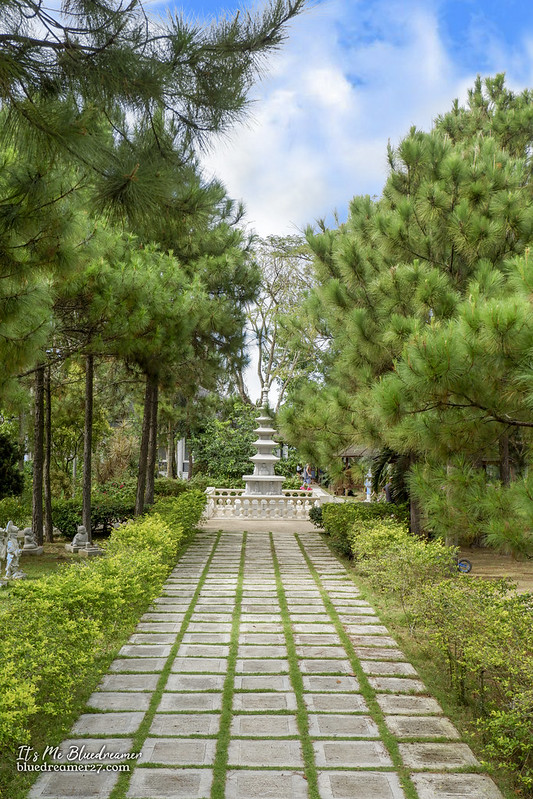 A beautiful and relaxing landscape adorned with luscious greens
A beautiful and relaxing landscape adorned with luscious greens

The Laughing Buddha

Did you know that the real name of the popular “Laughing Buddha” is Budai? He was a 10th-century Chinese monk who wandered from village to village carrying a large sack over his shoulder (his name literally translates to Cloth Sac). He was beloved by children and the poor, to whom he would give rice and sweets from his sack. He was venerated as Maitreya Buddha in Chan Buddhism.

Not too far from the temple is a stone image of a Pagoda with bas reliefs depicting the images of the deities and kings.

Some notable details of the Pagoda
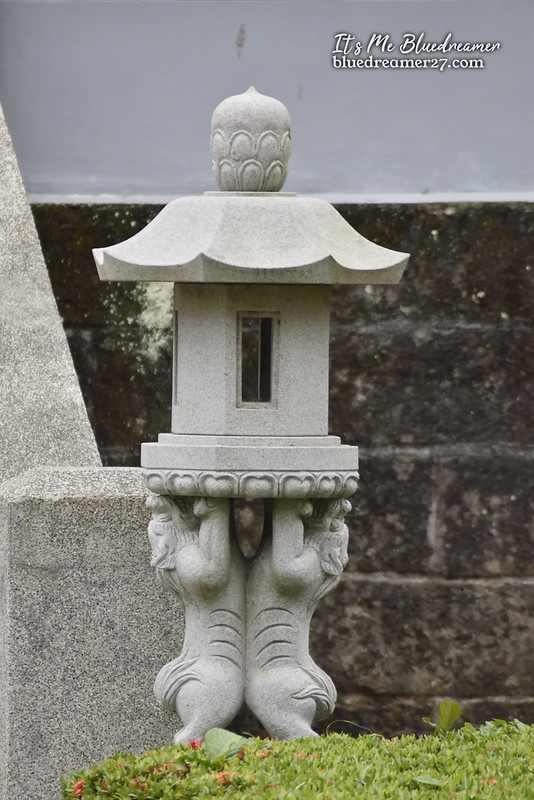
Sculpture near the temple
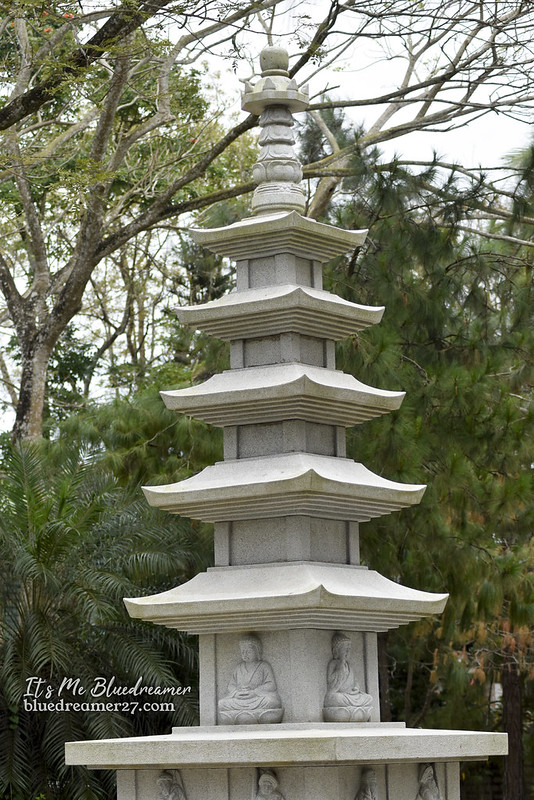
One important aspect of pagodas is their symbolic importance in Buddhist religion. They symbolize areas of worship as well as the greatness of Buddha himself, and the tall structure suggested a link between Heaven and Earth.

Another interesting sculpture near the temple

Visitors are also free to use their cottages and tables.
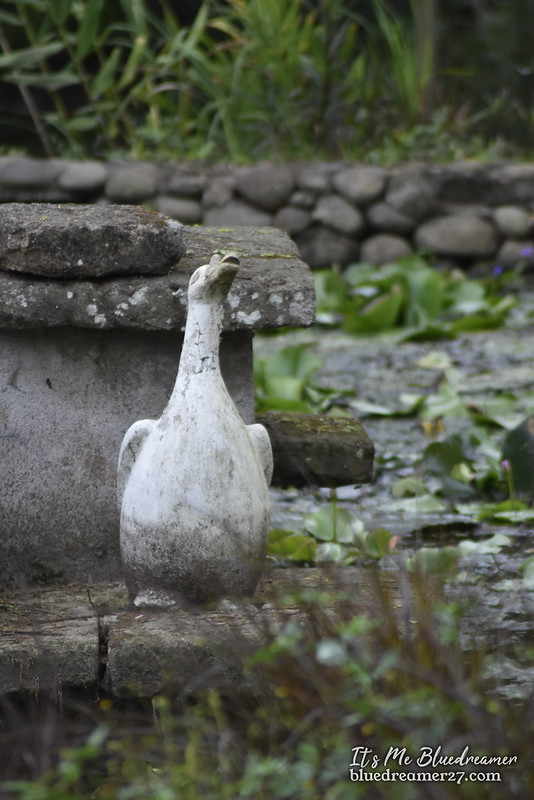
Some details from the nearby pond

Near the entrance, you’ll find a couple of so-called Nio Temple Guardians. They said that Nio Guardians are there to guard and protect the temple from evil spirits and demons but also human robbers. They are often depicted with mascular physique and fierce faces.
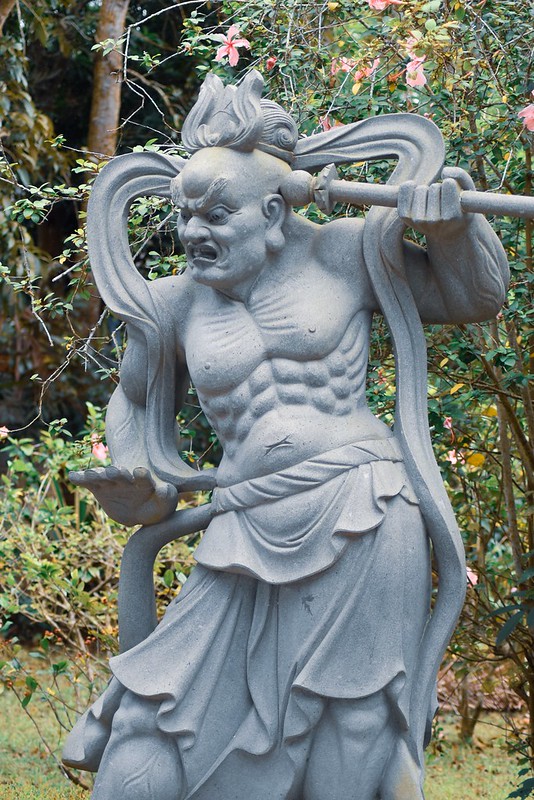
Another Nio Guardian
Things You Should Know Before Visiting the Korean Temple in Silang, Cavite
- Entrance Fee is Php 30 (to be collected by the caretaker)
- This is a sacred temple and a place of meditation, proper dress code must be applied and silence must be observed
- This is a pet-friendly zone
- Temple visiting Hours: Mondays to Fridays – 9 AM to 11 AM / 1 PM to 3 PM ; Saturdays to Sundays – 9 AM to 12 PM/ 1 PM to 4 PM
- Food and Drinks are allowed inside
- There is also a nearby playground for kids
How to Get to Korean Temple in Silang, Cavite
- If you are coming from Manila, ride a bus bound to Tagaytay. Ask the driver to drop you off at Estrella Hospital. Cross the street and you’ll find a nearby 7-11. Ride a Tricycle and ask the driver to drop you to the Korean Temple.
- If you are coming from Silang Church, ride a tricycle and ask the driver to drop you to the Korean Temple in Barangray Pooc 2
Source of Information: Still Steeping / How Stuff Works / Japan Experience / Facts and Details /




Pingback: Divine Mercy Parish in Biluso, Silang, Cavite - It's Me Bluedreamer!